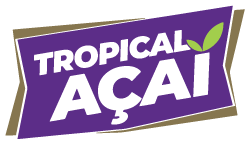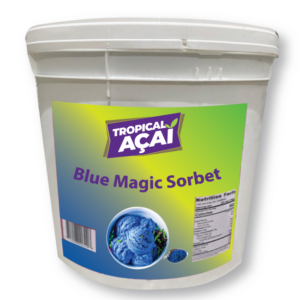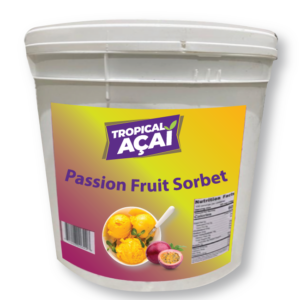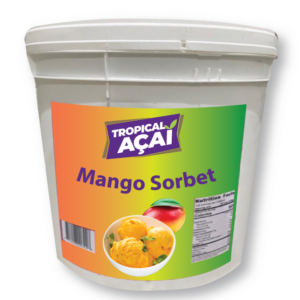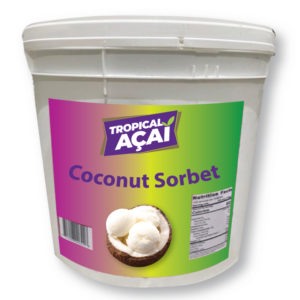Did you know that more and more children are consuming acai and pitaya? These natural superfoods have gained popularity for their numerous health benefits. But what about the safety of these fruits for children? As a parent, it’s essential to understand the potential risks and benefits of acai and pitaya consumption in children to make informed diet decisions.
Key Takeaways:
- Discover the nutritional benefits of acai and pitaya for children
- Understand the role of these fruits in weight management in children
- Learn about potential risks and precautions when children consume acai and pitaya
- Explore different ways to incorporate acai and pitaya into your child’s diet
- Find out the safe consumption guidelines for acai and pitaya in children
Nutritional Benefits of Acai and Pitaya for Children
Acai and pitaya are not only delicious, but they also offer numerous nutritional benefits for children. Incorporating these fruits into their diet can provide essential vitamins, minerals, and antioxidants that support their growth and overall well-being.
Acai: Antioxidants and Essential Nutrients
Acai berries are packed with antioxidants, which help protect the body against harmful free radicals and oxidative stress. These antioxidants, particularly anthocyanins, promote general health and reduce the risk of chronic diseases.
Additionally, acai is a good source of fiber, supporting healthy digestion and preventing constipation. It also contains essential vitamins and minerals like vitamin A, vitamin C, calcium, and potassium, which are vital for developing strong bones, healthy skin, and a robust immune system.
Pitaya: Fiber, Vitamin C, and Magnesium
Pitaya, also known as dragon fruit, is rich in fiber, helping to regulate bowel movements and maintain a healthy digestive system. Its fiber content also contributes to feelings of fullness, which can assist in weight management for children.
This vibrant fruit is also a great source of vitamin C, which supports immune function, helps with wound healing, and aids in iron absorption. Additionally, pitaya contains magnesium, a mineral essential for muscle function and nerve health.
The Nutritional Comparison
| Nutrients | Acai (per 100g) | Pitaya (per 100g) |
|---|---|---|
| Calories | 70 | 60 |
| Fiber (g) | 5 | 9 |
| Vitamin C (mg) | 4 | 9 |
| Calcium (mg) | 12 | 8 |
| Potassium (mg) | 160 | 220 |
As seen in the table above, acai and pitaya are both low in calories, making them suitable for children as part of a balanced diet. While acai is slightly higher in calories than pitaya, it compensates with a higher calcium content. On the other hand, pitaya contains more fiber, vitamin C, and potassium.
Introducing acai and pitaya into your child’s diet ensures they receive the nutritional benefits these fruits offer. Whether enjoyed on their own, added to smoothies, or incorporated into healthy snacks, acai and pitaya provide a tasty and nutritious addition to your child’s meals.
The Role of Acai and Pitaya in Weight Management in Children
While acai and pitaya are often promoted as aids for weight management in adults, their effectiveness in children is still under research. Limited evidence exists regarding the specific role of these fruits in weight management for children. However, the high fiber content found in acai and pitaya can help promote feelings of fullness and support weight management efforts.
The fiber in acai and pitaya can contribute to a sense of satiety, which may help children consume fewer calories overall. Incorporating these fruits into a child’s diet can contribute to weight management by reducing excessive snack consumption or overeating during meals.
It is important to note that weight management in children should not solely rely on consuming specific fruits like acai or pitaya. Instead, promoting balanced eating habits and regular physical activity are essential for overall weight management success. Encourage your child to eat various fruits, vegetables, lean proteins, and whole grains while engaging in age-appropriate physical activities.
Remember, long-term weight management in children is best achieved through healthy habits and a well-rounded lifestyle.
Potential Benefits of Acai and Pitaya Fibers for Weight Management in Children
The fiber content in acai and pitaya can provide several potential benefits for weight management in children:
- Promotes feelings of fullness: The high fiber content in these fruits can help children feel more satisfied after consuming them, reducing the chances of excessive snacking or overeating.
- Aids in digestion: Fiber supports healthy digestion, essential for maintaining a healthy weight.
- Supports overall gut health: Consuming fiber-rich foods like acai and pitaya can contribute to a diverse and balanced gut microbiome, which regulates weight.
- Helps regulate blood sugar levels: The fiber in acai and pitaya can slow down the absorption of sugar into the bloodstream, preventing sudden spikes in blood sugar levels that can lead to cravings and overeating.
Incorporating acai and pitaya into a child’s diet provides them with a nutritious option that can contribute to their overall health and potentially support weight management efforts.
| Acai Pitaya | |
|---|---|
| High in antioxidants | Rich in fiber |
| Contains essential vitamins and minerals | Aids digestion |
| It may help promote general health | Supports immunity |
| Low in calories | Contributes to muscle function |
While incorporating acai and pitaya into a child’s diet can potentially support weight management, it is important to remember that these fruits should be part of a well-balanced diet and a healthy lifestyle overall. Consult with a healthcare professional or a registered dietitian to create a personalized approach to weight management for your child.
Potential Risks and Precautions of Acai and Pitaya for Children
While acai and pitaya are generally safe for children to consume, it is essential to be aware of potential risks and take necessary precautions. Here are some considerations:
Risks of Acai for Children
Acai berries, when not appropriately processed, may carry a risk of Chagas disease. This disease is caused by a parasite called Trypanosoma cruzi, which can be found in the feces of certain insects. It is crucial to ensure that acai products are sourced from reputable companies that adhere to strict quality control measures to minimize the risk of contamination.
Risks of Pitaya for Children
There are no known specific risks associated with pitaya consumption in children. However, it is worth mentioning that children with pollen allergies or sensitivities to similar berries may experience allergic reactions to pitaya. It is advisable to observe children after consuming pitaya for any adverse symptoms and consult a healthcare professional if there are concerns.
Precautions for Children Consuming Acai and Pitaya
When introducing acai and pitaya into a child’s diet, it is always best to exercise caution and follow these precautions:
- Consult with a healthcare professional before adding acai and pitaya to your child’s diet, especially if your child has any existing medical conditions or dietary restrictions.
- Start with small quantities to assess your child’s tolerance and any potential allergic reactions.
- Choose organic and reputable sources for acai and pitaya products to ensure quality and minimize the risk of contamination.
- Monitor your child for any adverse effects after consuming acai and pitaya, and seek medical advice if needed.
Taking these precautions and staying vigilant can safely incorporate acai and pitaya into your child’s diet, reaping the nutritional benefits while minimizing potential risks.
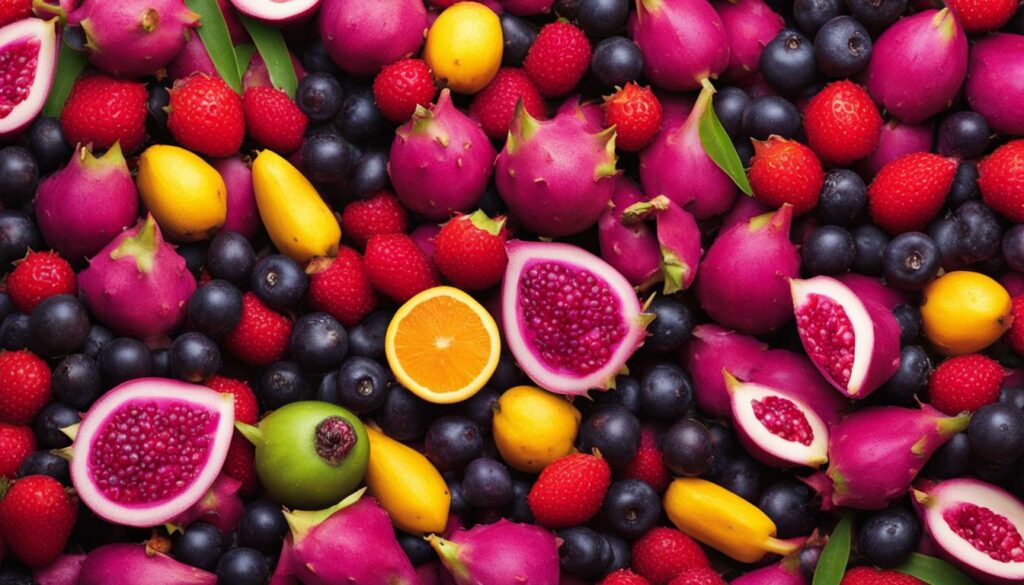
Incorporating Acai and Pitaya into Children's Diet
Introducing acai and pitaya into your child’s diet can be a delicious and nutritious way to enhance their overall health. These superfruits offer a variety of benefits, and there are numerous ways to incorporate them into your child’s meals and snacks.
Acai Recipes for Children
Acai is a versatile fruit that can be enjoyed in various forms. Here are some acai recipes that your child will love:
- Acai Smoothie: Blend frozen acai packets with your child’s favorite fruits, yogurt, and a splash of milk for a refreshing and nutrient-packed smoothie.
- Acai Bowl: Top a bowl of acai puree with sliced fruits, granola, and a drizzle of honey. It’s a fun and satisfying way for your child to enjoy acai.
- Acai Popsicles: Make homemade acai popsicles by blending acai with fruit juice and pouring the mixture into molds. Freeze them for a healthy and tasty treat.
Pitaya Recipes for Children
Pitaya, also known as dragon fruit, is another exotic fruit that kids will enjoy. Here are some pitaya recipes to try:
- Pitaya Smoothie: Blend pitaya cubes with coconut water, pineapple, and banana for a vibrant and flavorful smoothie to entice your child’s taste buds.
- Pitaya Fruit Salad: Add cubed pitaya to a colorful fruit salad featuring other favorites like berries, grapes, and kiwi. It’s a visually appealing and nutritious snack.
- Pitaya Chia Pudding: Combine pitaya puree with chia seeds and coconut milk. Let it set in the refrigerator overnight for a healthy and satisfying pudding.
Consider age-appropriate serving sizes and monitor your child for any adverse reactions. Consulting a healthcare professional with any concerns is always a good idea.
Next, explore some safe consumption guidelines to ensure your child can enjoy acai and pitaya healthily.
Safe Consumption Guidelines for Children
When introducing acai and pitaya into your child’s diet, ensuring safe consumption is a top priority. By following these guidelines, you can confidently incorporate these nutritious fruits into your child’s meals and snacks.
Choose Organic and Reputable Sources
When purchasing acai and pitaya for your child, choose organic products from reputable sources. This helps minimize pesticide exposure and ensures higher-quality fruits for your child’s consumption.
Monitor Portion Sizes
While acai and pitaya are nutritious, they should be part of a balanced diet. Monitor portion sizes to avoid excessive intake of these fruits. A serving size of acai or pitaya for children is typically around 1/2 to 1 cup.
Introduce Gradually
Introduce acai and pitaya into your child’s diet gradually to allow their bodies to adjust to these new foods. Start with small amounts and observe any reactions or sensitivities. If your child tolerates them well, you can gradually increase the frequency and amount of consumption.
Observe Allergic Reactions
Just like with any new food, it’s important to observe your child for any potential allergic reactions when introducing acai and pitaya. Watch for symptoms such as hives, itching, swelling, or difficulty breathing. If you notice these signs, discontinue consumption and seek medical advice.

“By following these safe consumption guidelines, you can ensure that your child benefits from the nutritional goodness of acai and pitaya while minimizing any potential risks.”
Popular Acai and Pitaya Products for Children
When it comes to incorporating acai and pitaya into a child’s diet, various delicious and convenient products are available in the market. These products are specifically targeted towards children and offer a hassle-free way to enjoy the nutritional benefits of acai and pitaya.
Acai Products for Children:
- Organic Acai Bowls: These ready-to-eat bowls are packed with acai puree and topped with granola, fruits, and other nutritious ingredients. They are visually appealing and provide a delightful blend of flavors that kids will love.
- Acai Sorbet: Acai sorbet is a refreshing dessert for children as a guilt-free dessert. It is made from acai puree and has a smooth and creamy texture, making it a perfect alternative to traditional ice cream.
- Acai Puree Cubes: Acai puree cubes are convenient for creating homemade acai smoothies and bowls. Blend the frozen cubes with your child’s favorite fruits and liquids for a quick and nutritious snack.
Pitaya Products for Children:
- Pitaya Puree Packs: Pitaya puree packs are a convenient way to enjoy the vibrant flavors of pitaya. These packs contain frozen pitaya puree that can be used to make smoothies, popsicles, or pancakes and yogurt toppings.
These popular acai and pitaya products for children provide various options to suit different preferences. Whether it’s a refreshing acai sorbet on a hot summer day or a nutritious acai bowl for breakfast, these products are designed to make it easy for children to consume these superfoods.
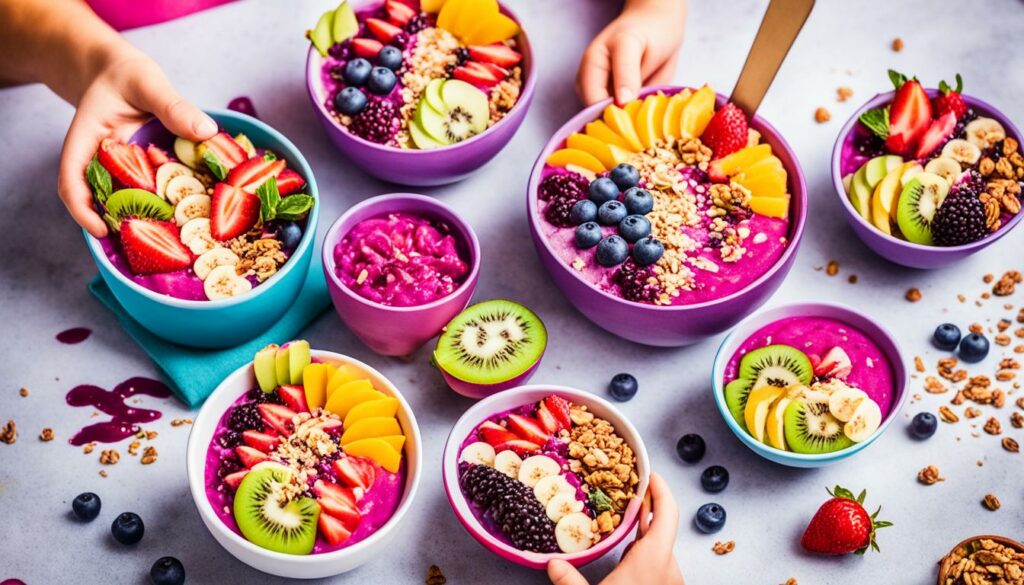
Incorporating Acai and Pitaya into a Child's Balanced Diet
Acai and pitaya can be valuable additions to a child’s balanced diet, providing a wide range of essential nutrients. When incorporating these fruits into your child’s diet, it is important to encourage them to consume a diverse range of nutrient-rich foods.
Remember, variety is key to providing your child with the essential nutrients they need for growth and development.
Here are some tips for incorporating acai and pitaya into your child’s daily meals:
1. Smoothies and Bowls:
Add acai or pitaya to delicious and nutritious smoothies or breakfast bowls. Blend them with other fruits, yogurt, and a liquid of your choice for a refreshing and colorful treat.
2. Fresh Fruit Salads:
Slice acai and pitaya and add them to a vibrant fruit salad. Combining these tropical fruits with other seasonal fruits will provide a burst of flavor and a variety of nutrients.
3. Healthy Snacks:
Incorporate acai and pitaya into homemade granola bars, energy balls, or fruit skewers for a fun and nutritious snack. These snacks are not only delicious but also rich in vitamins and minerals.
4. Toppings:
Sprinkle acai or pitaya powder on yogurt, oatmeal, or pancakes to enhance the flavor and add an extra nutritional boost to your child’s favorite foods.
Remember to gradually introduce these fruits into your child’s diet and monitor for adverse reactions. Incorporating acai and pitaya alongside other nutrient-rich foods can help provide your child with a balanced and varied diet.
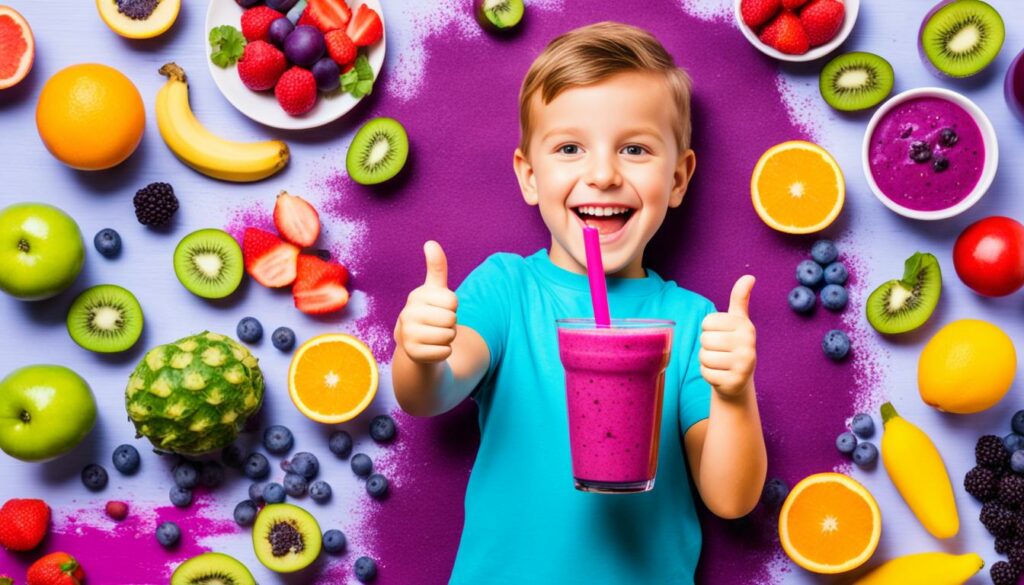
| Fruit | Nutrients | Benefits |
|---|---|---|
| Acai | Antioxidants, fiber, vitamins (A, C, E), minerals (calcium, potassium) | Supports immune function, promotes general health, aids digestion |
| Pitaya | Fiber, vitamin C, iron, magnesium | Boosts immunity, aids digestion, supports muscle function |
The Importance of Parental Guidance and Monitoring
As a responsible parent, providing proper guidance and monitoring your child’s consumption of acai and pitaya is crucial. You can ensure their safety and promote healthy habits by taking an active role in their nutrition. Here are some key factors to consider:
- Educate Yourself: Familiarize yourself with the nutritional benefits and potential risks associated with acai and pitaya consumption in children. Stay informed about the appropriate portion sizes and recommended serving frequencies.
- Read Labels: When purchasing acai and pitaya products, read the ingredient labels carefully. Look for organic options and avoid products with added sugars or artificial ingredients.
- Control Portion Sizes: While acai and pitaya offer numerous health benefits, moderation is key. Ensure your child consumes these fruits in appropriate sizes for their age and dietary needs.
- Encourage Communication: Regularly communicate with your child about their acai and pitaya consumption. Discuss their preferences and any reactions they might experience, and address any concerns.
- Consult Healthcare Professionals: Maintain open communication with healthcare professionals, such as pediatricians or nutritionists. Seek their guidance on incorporating acai and pitaya into your child’s diet and address individual concerns.
Parental guidance and monitoring are essential to ensure the safe and appropriate consumption of acai and pitaya for children. By staying informed, reading labels, controlling portions, fostering communication, and seeking professional advice, you can create a healthy and enjoyable eating experience for your child.
Remember, every child is unique, and it’s essential to tailor their diet to their needs. By providing parental guidance and monitoring, you can promote a balanced lifestyle and help your child develop lifelong healthy eating habits.
Now, look at some popular acai and pitaya products specifically designed for children.
Conclusion
In conclusion, acai and pitaya can be excellent choices for introducing nutritious fruits into your child’s diet. These superfoods provide a range of health benefits, including antioxidants, vitamins, minerals, and fiber. However, it is essential to exercise caution and consider any potential risks associated with acai and pitaya consumption.
With proper guidance and monitoring, acai and pitaya can be safely incorporated into a balanced diet for children. It is recommended that you choose organic and reputable sources for these fruits and gradually introduce them into your child’s diet. Additionally, it’s crucial to consult with healthcare professionals who can provide personalized advice based on your child’s needs.
Incorporating acai and pitaya into your child’s diet can help promote their overall health and well-being. Remember to encourage other nutrient-rich foods, such as fruits, vegetables, whole grains, lean proteins, and healthy fats. As with any dietary changes, parental guidance and monitoring are crucial to ensuring your child’s optimal nutrition.
